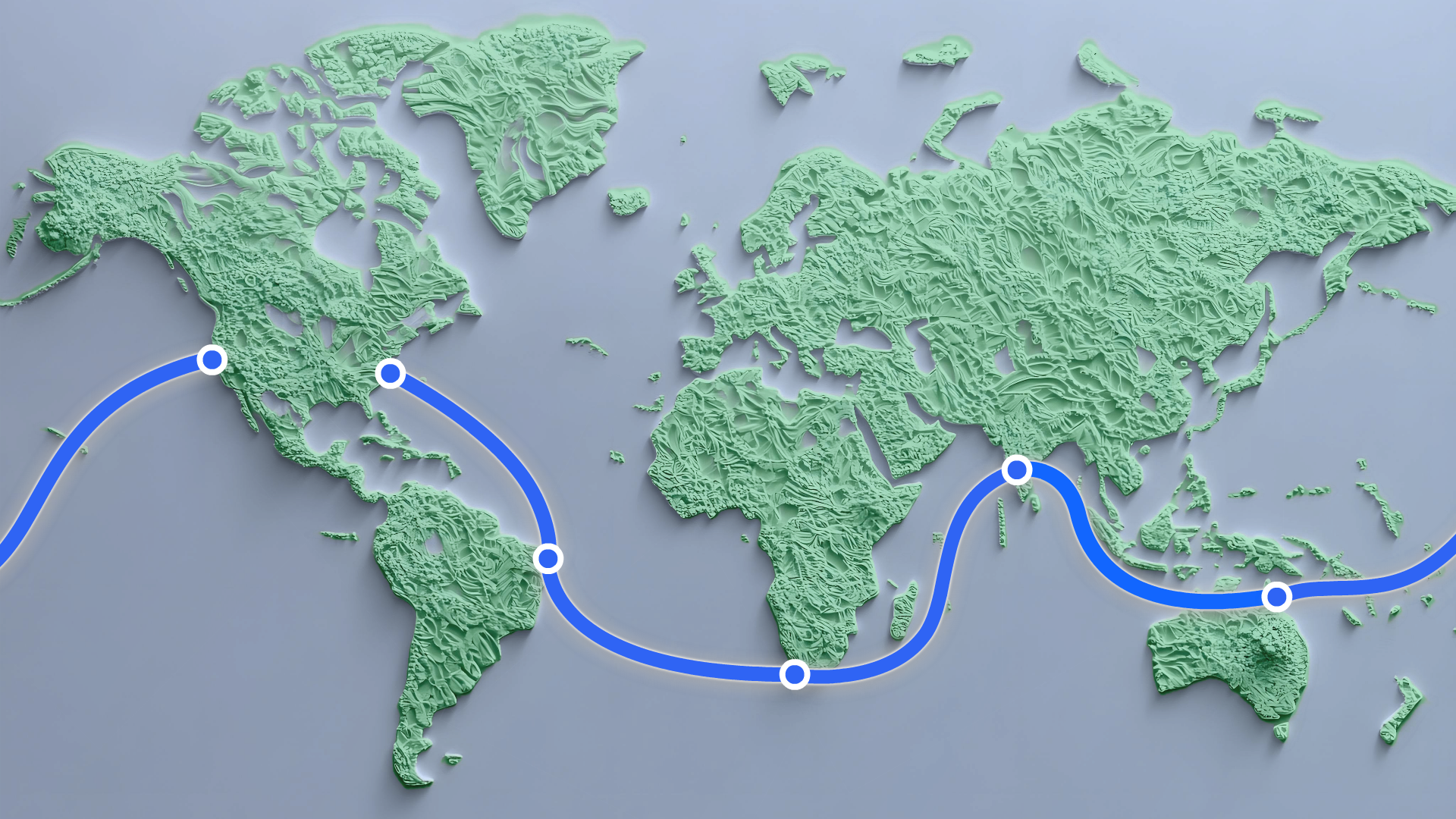
The owner of Facebook, WhatsApp, and Instagram, Meta, has confirmed its plans to build the longest subsea cable ever - by a long chalk. Officially named Project Waterworth, the data cable was first revealed in October last year by OpenCables founder Sunil Tagare.
Project Waterworth will be longer than what Tagare thought, 50,000 kilometres and not 40,000, so the suggested US$2 billion construction cost could be a bit higher. In comparison, the Southern Cross Cable system, which is one of New Zealand's important international links, has grown to 30,500 km of subsea and terrestrial links, arranged in a triple-ring configuration for resilience.
The published cable route map shows it going from the East Coast of the US, with landing stations in Brazil, and South Africa, reaching India. From there, Project Waterworth will land in Australia, probably Darwin, before continuing to the West Coast of the United States. Tagare suggested the India landing station will be in Chennai.
Subsea cables have been in the news recently, with Russia being accused of damaging cables in the Baltic Sea by having its "Shadow Fleeet" ships deliberately drag their anchors across them. This seems to have weighted on Facebook Engineering's mind, and they have taken it into consideration:
"We are also deploying first-of-its-kind routing, maximising the cable laid in deep water — at depths up to 7,000 meters — and using enhanced burial techniques in high-risk fault areas, such as shallow waters near the coast, to avoid damage from ship anchors and other hazards," FB Engineering said.
The routing of the cable is interesting too, as it bypasses Europe and the Red Sea.
Meta's online properties generate a huge proportion of the world's total internet traffic, and Project Waterworth will have 24 fibre pairs to accommodate future growth, instead of just 8 or 16 pairs. No design capacity has been mentioned yet, but by the time Project Waterworth is ready to be commissioned, it could be that 100 terabits/s per fibre pair is achievable which might last Meta a while, artificial intelligence and user generated content traffic notwithstanding.
Currently, there is no indication that Meta will make cable capacity on Project Waterworth available to outside entities.
Who will construct the cable, and lay it for Meta is yet to be announced. As the subsea cable industry is booming currently, finding a cable laying partner could be challenging for Meta. There aren't enough ships with experienced crews to meet current demand, and that's before we start looking at cable maintenance and repairs along the 50,000 km route. Data centres will need to be built as well, so yes, Project Waterworth will indeed be a "multi-billion dollar, multi-year investment" like FB Engineering said.
3 Comments
Seems like a risky investment. In fact I have no idea how anyone makes money on intercontinental data cables? Can anyone shed some light on this?
When I first opened the article I was hoping it was something about a power cable and had to get about half way down to find out that it was just data cabling. Now a power cable would be exciting.
They could sell bandwidth to ISPs or use the data cable to sell premium cloud services that guarantee speed and reliability.
A 50,000 km power cable would indeed be something else. As for making money out of undersea cables, that's probably a more complex issue in 2025 compared to just a decade or two ago. From what's known at the moment, Project Waterworth will be entirely for Meta's use. They also have other cables, just like Google, and on most of them, capacity isn't resold to outsiders. Putting it like this, Meta has an enormous amount of money, and isn't afraid to spend a bunch of it on its own infrastructure.

We welcome your comments below. If you are not already registered, please register to comment.
Remember we welcome robust, respectful and insightful debate. We don't welcome abusive or defamatory comments and will de-register those repeatedly making such comments. Our current comment policy is here.